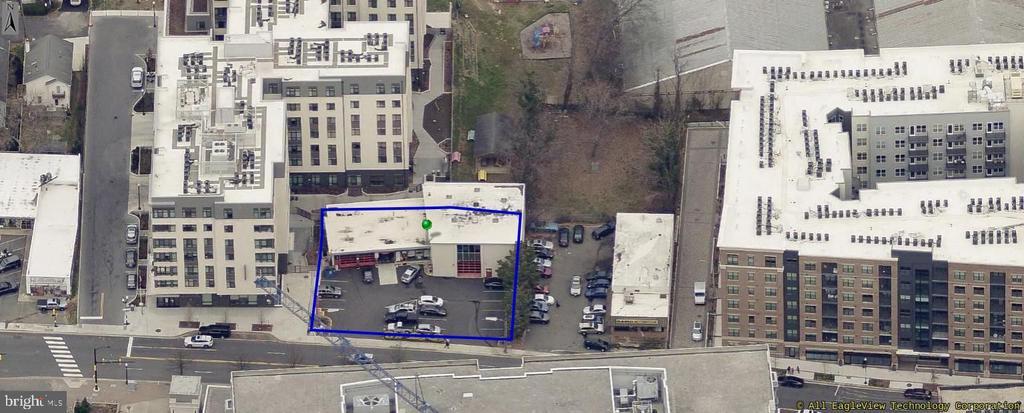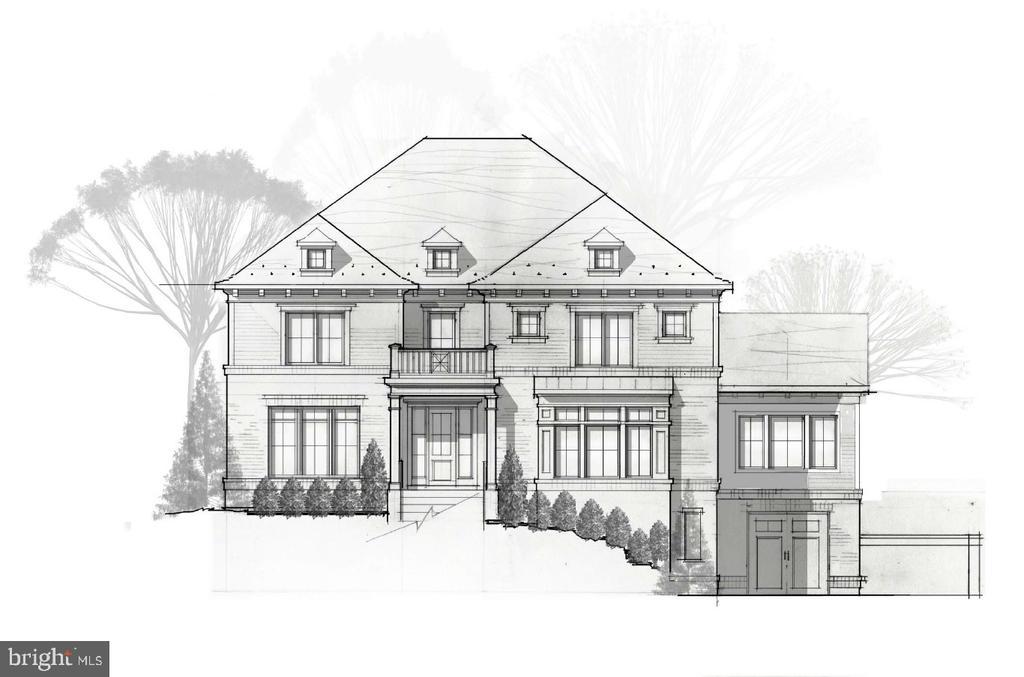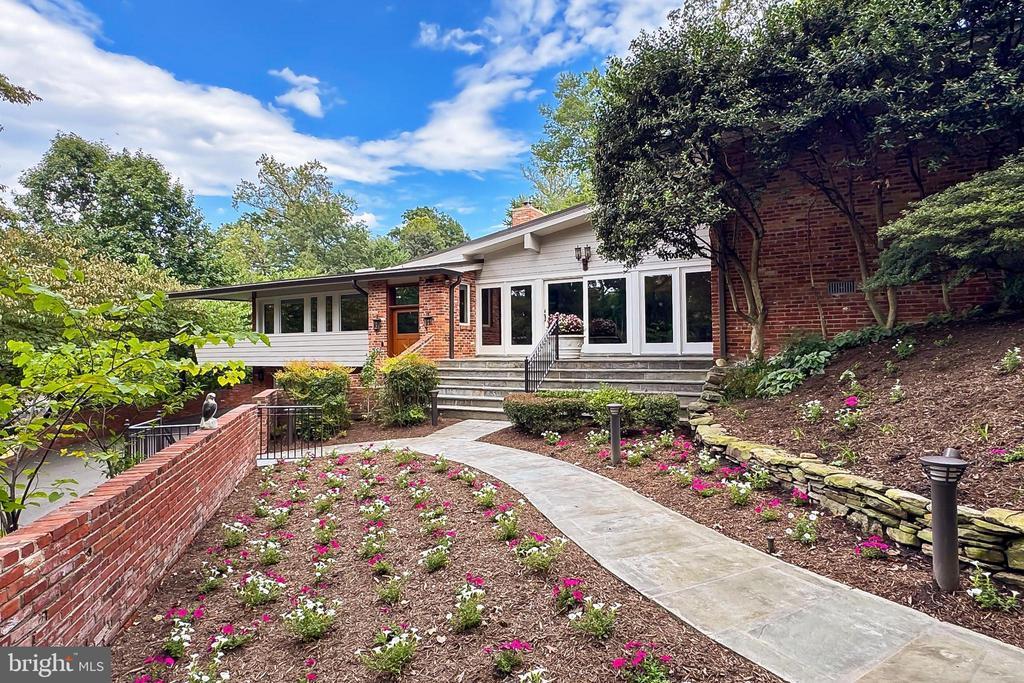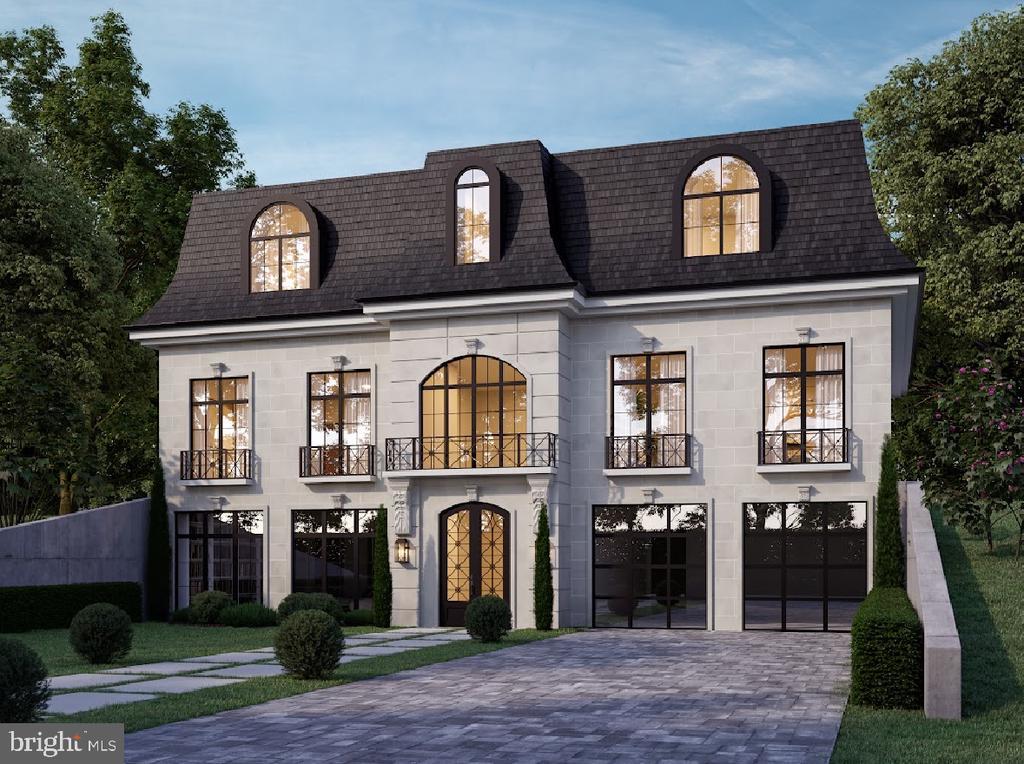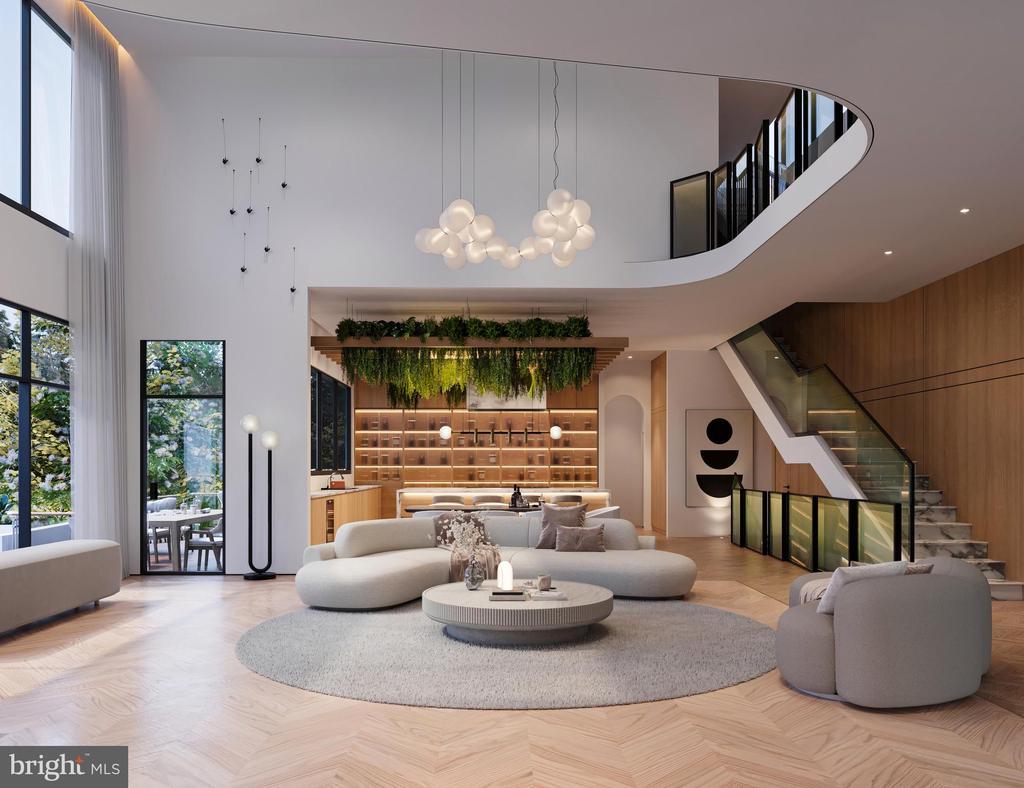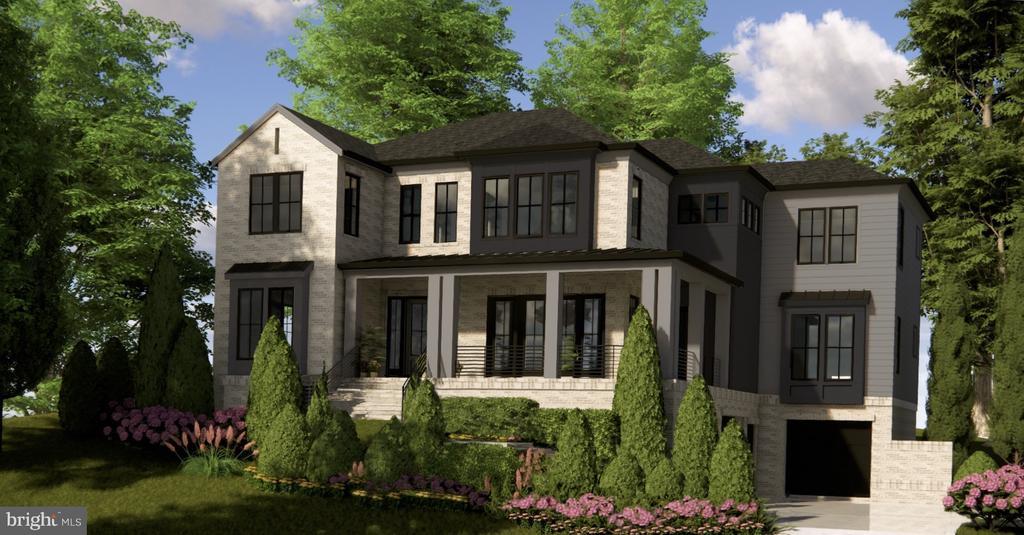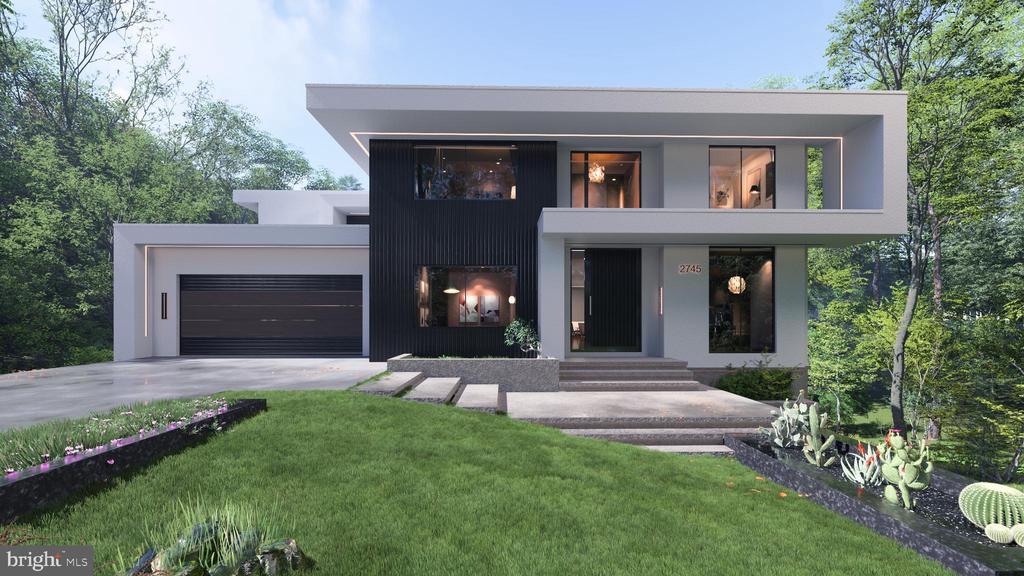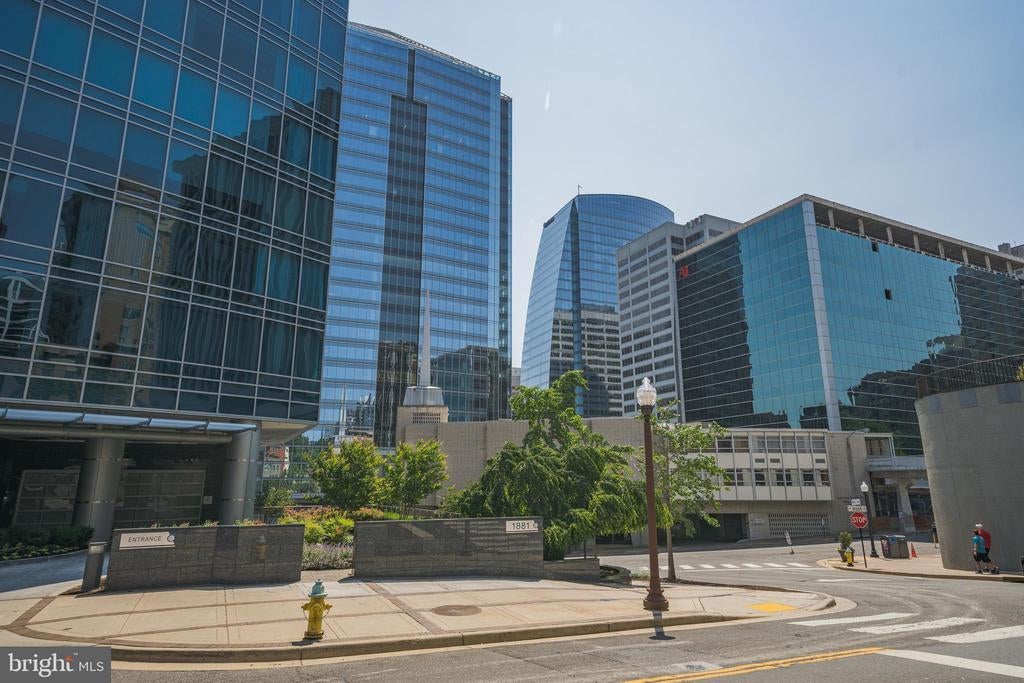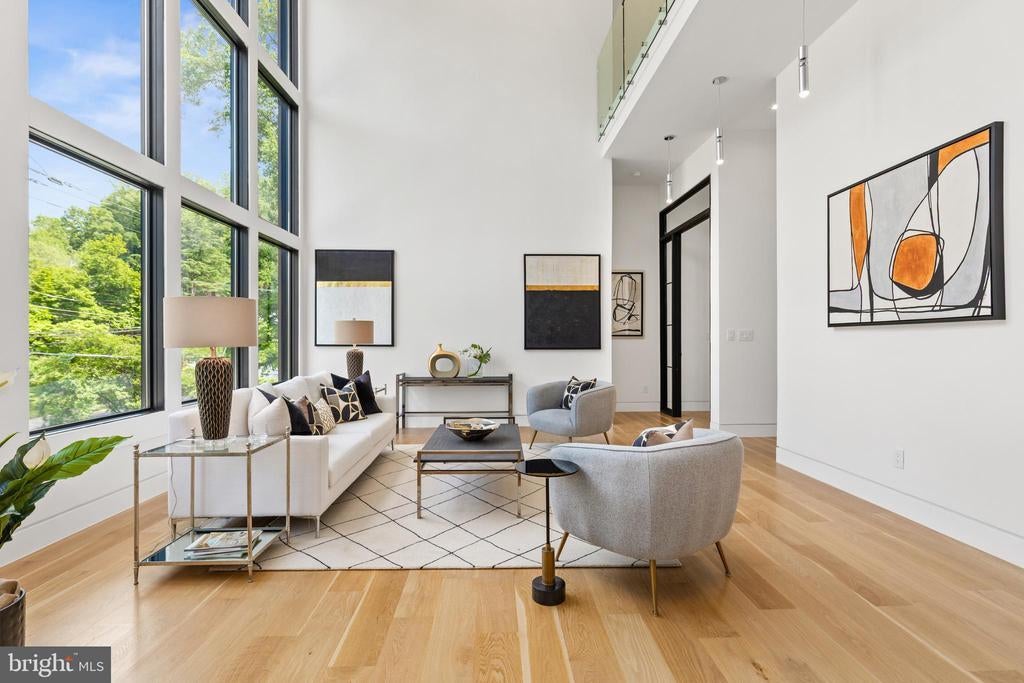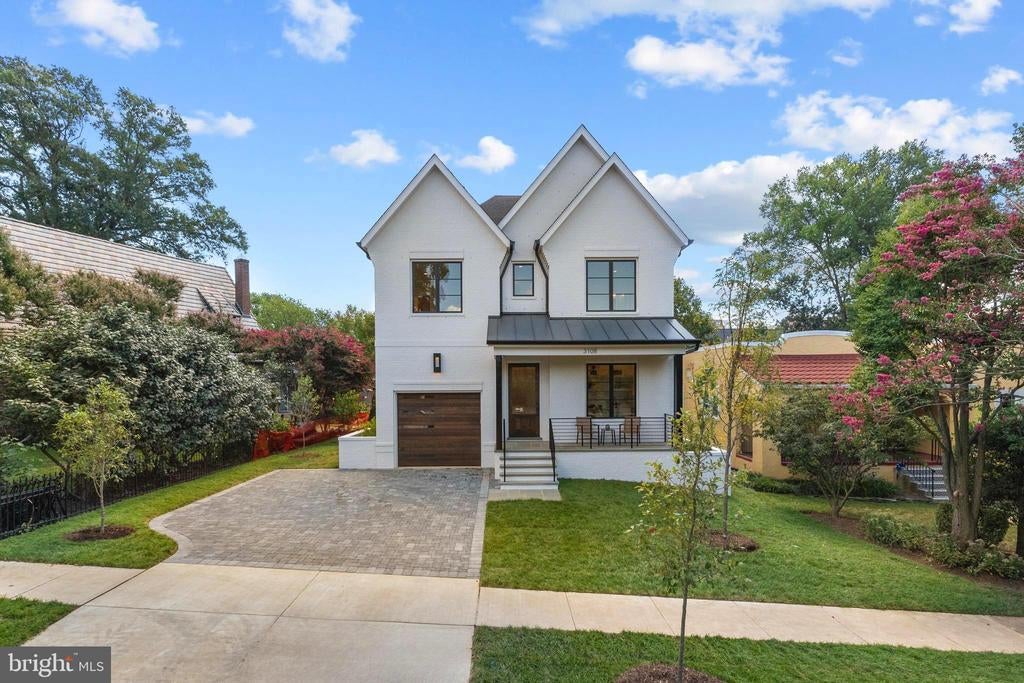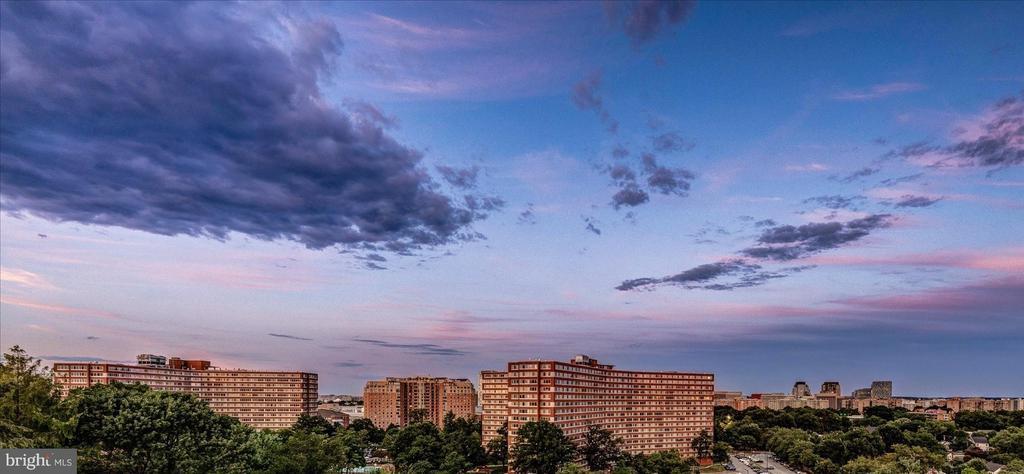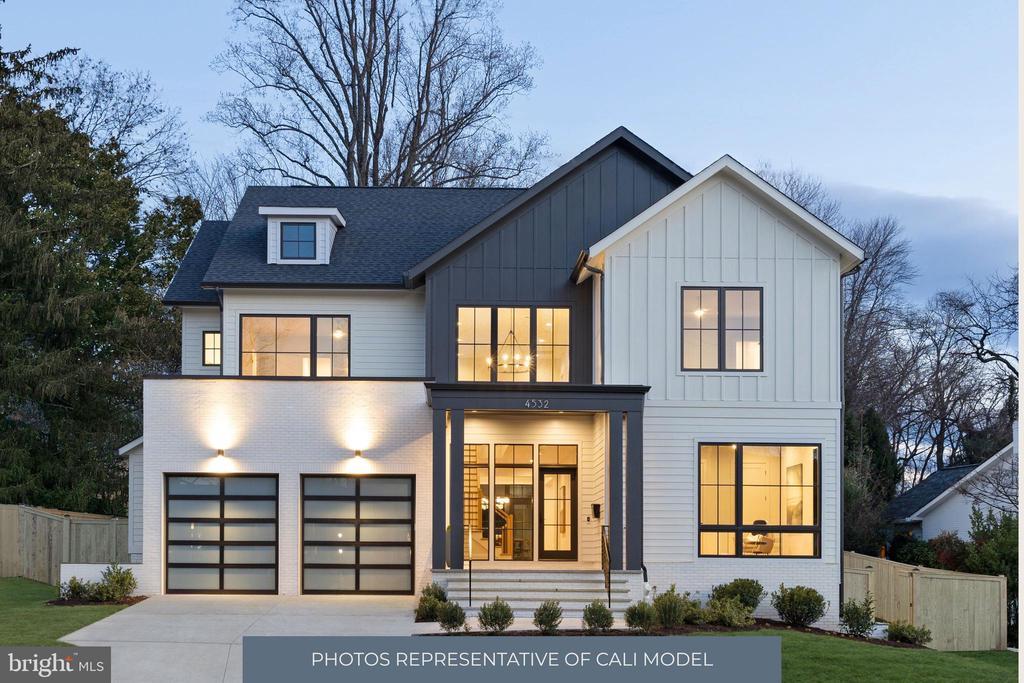Real Estate Statistics
| Average Price | $703K |
|---|---|
| Lowest Price | $30 |
| Highest Price | $6.5M |
| Total Listings | 1,001 |
| Avg. Days On Market | 60 |
| Avg. Price/SQFT | $331 |
Property Types (active listings)
Arlington County
Arlington Virginia: The Complete 2025 Guide to Living in Northern Virginia's Crown Jewel
Arlington Virginia represents the perfect blend of urban sophistication and suburban livability, all within minutes of Washington DC. As someone who's helped hundreds of families navigate this unique market and watched Arlington's transformation over decades, I can tell you that this isn't just another Northern Virginia community—it's the gold standard for transit-oriented living on the East Coast.
With a median home price of $740,000 and some of the nation's highest walkability scores, Arlington attracts young professionals, government contractors, and growing families who value convenience over space. But the question isn't whether Arlington is expensive—it's whether the lifestyle, career opportunities, and long-term appreciation potential justify the investment for your specific situation.
The Controversial Decision That Changed Everything
Arlington's transformation began with what most experts in 1965 called "financial suicide." While other counties were investing their money into highways, Arlington made a $2.3 billion bet on the future of public transportation. They decided to bring the Metro rail system across the Potomac River, a decision that wouldn't see its first station open until 1975.
I've driven over those bridges connecting Arlington to Washington DC thousands of times, and it's definitely a beautiful drive. You come right over that bridge on I-66 and see Washington DC with all the monuments spread out before you. But what makes Arlington special isn't just the view—it's what that controversial transportation investment created.
Today, Arlington has achieved a 45% transit commuter share compared to the 8% national average. They invested in 49 miles of protected bike lanes and created direct access to Reagan National Airport. The result? Arlington became one of the few truly walkable communities in Northern Virginia, and property values have reflected that vision ever since.
From Military Hub to Silicon Valley East: Arlington's Four-Phase Evolution
Understanding Arlington's real estate market today requires understanding how we got here. I like to think of Arlington's development in four distinct phases, each building on the last to create what we see today.
Phase 1: The Pentagon Foundation (1940-1960)
Everything changed in 1943 when Pentagon construction started during World War II. This massive 6.6 million square foot facility brought over 23,000 workers to what was then Alexandria County (renamed Arlington in 1920). Defense contractors started flooding into the area, and we began seeing the first planned residential neighborhoods.
The strategic location right along the Potomac River, with access to five key bridges connecting to Washington DC, made Arlington the perfect spot for this military hub. What nobody anticipated was how this foundation would support everything that came after.
Phase 2: The Smart Growth Revolution (1970-2000)
The 1965 Metro decision marked the beginning of what I call Arlington's smart growth revolution. While other jurisdictions were building highways and encouraging car-dependent development, Arlington was creating something different. The first Metro station opened in 1975, and by 2000, we had developed the Rosslyn and Ballston corridors as transit-oriented communities.
This is when Arlington started to feel like what many visitors describe as a "mini New York City." Obviously not as packed, but you have tons of people walking around. It became pretty much the only truly walkable area in Northern Virginia, and that distinction has only grown stronger over time.
Phase 3: The Tech Revolution (2010-2020)
Between 2010 and 2020, Arlington experienced 83% tech growth. The county successfully attracted major technology companies while maintaining its government contracting base. This diversification created economic stability that other regions envied, especially during economic downturns when government contracts provided a buffer against private sector volatility.
The professional services sector grew to represent 40% of the workforce, while the tech sector reached 25%. This wasn't just about jobs—it was about creating a knowledge economy that would attract Amazon's attention.
Phase 4: The Amazon Era (2018-Present)
When Amazon announced their $3.4 billion HQ2 investment in 2018, it validated everything Arlington had been building toward. The project wasn't just about bringing 25,000 high-paying jobs when fully operational—it was about cementing Arlington's transformation into what many now call the "Silicon Valley of the East."
The $1 billion Virginia Tech Innovation Campus followed, creating a complete ecosystem of education, innovation, and employment. Today, Arlington attracts $12 billion in annual federal contracts while maintaining that 94% office occupancy rate that made headlines when San Francisco was emptying out.
What Makes Arlington's Infrastructure Actually Work
I've worked with clients relocating from cities across the country, and one thing that consistently surprises them is how well Arlington's infrastructure actually functions. This isn't by accident—it's the result of decades of strategic investment.
Transportation That Connects Everything
Arlington has 11 Metro stations across three different lines, creating connectivity that most suburban areas can only dream of. These aren't just token transit options—they're genuinely useful for daily commuting. I have clients who've lived car-free in Arlington for years, something that's nearly impossible in most of Northern Virginia.
The 52 miles of dedicated bike trails aren't just recreational amenities. They're part of a connected transportation network that earned Arlington a 93 walkability score in its urban areas. When you combine this with direct access to Reagan National Airport and those five bridges connecting to Washington DC, you understand why so many professionals choose Arlington despite the premium housing costs.
Quality of Life Infrastructure
The details matter, and Arlington gets them right. The 17:1 student-teacher ratio compared to 28:1 in Washington DC means families get genuine educational value. The 4.3-minute emergency response time provides security that busy professionals need. The commitment to 100% renewable energy by 2035 and 230 LEED certified buildings appeals to environmentally conscious buyers.
These aren't just statistics—they're the foundation of daily life quality that justifies Arlington's premium real estate prices.
Understanding Arlington's Demographics and Lifestyle
Arlington attracts a specific type of resident, and understanding this helps explain both the housing market and the community culture. The median age is 34 years old, reflecting the young professional population that defines much of Arlington's character.
The violent crime rate of 80-86 per 100,000 residents ranks among the lowest in the United States. This safety, combined with urban amenities, creates a unique appeal for professionals who want city convenience without city crime concerns.
The Arlington Lifestyle Experience
What I love about Arlington is the energy, especially on weekends during the summer. You can walk down toward the bars near Rosslyn and you'll see college-age kids, young professionals who work on Capitol Hill or for companies like Capital One, people coming from Wizards and Nationals games—everyone's out there having fun and they can walk back home to their condo or apartment.
This walkable lifestyle is something I consistently hear about from clients. They love being able to grab dinner in Clarendon, catch a concert in Rosslyn, or meet friends in Ballston, all without worrying about parking or designated drivers.
The Northern Virginia Progression
There's a pattern I've observed after years of helping people buy and sell in Arlington. Many young professionals start here around age 25, get really good jobs, and stay until they're about 35. Once they decide to have a family, they often move out to the suburbs of Fairfax County, Loudoun County, or Prince William County while maintaining their Arlington connections.
This progression creates a constant demand for Arlington housing from incoming young professionals, while also generating move-up buyers for surrounding counties. It's a dynamic that has supported steady appreciation over time.
Arlington's Real Estate Market: Current Reality and Opportunities
Let me share what's actually happening in Arlington's real estate market right now, using data from June 2025 that shows both opportunities and challenges for buyers and sellers.
Current Market Snapshot
In June 2025, we saw 244 closed sales in Arlington, which represents a 17.9% increase compared to June 2024. However, the median sold price was $740,000, down 8.4% from last year's $807,500. The average days on market increased to 29 days, up from 19 days last year, and we have 433 active listings, which is 44.8% more inventory than June 2024.
What do these numbers mean for real buyers and sellers? The market has shifted from the frenzied pace of 2021-2022 to something more balanced. Buyers have more choices and more time to make decisions, while sellers need to be more strategic about pricing and presentation.
Despite this cooling, Arlington has still seen 22% appreciation since 2020, demonstrating the underlying strength of demand driven by job growth and limited supply.
Housing Options and Price Points
Condominium Market ($500K - $5M+)
Arlington's condo market offers incredible range, from $500,000 units perfect for first-time buyers to $5 million penthouses with views of the Kennedy Center and Washington Monument. However, condos do take longer to sell, and there's a specific reason for this.
Condo fees can get very expensive in Arlington, and it all comes down to amenities and building infrastructure. If it's a high-rise with elevators, that brings extra costs. Buyers are increasingly sophisticated about analyzing these fees and their impact on total housing costs.
The average sales price for attached homes (which includes condos and townhomes) in June 2025 was $553,837. For buyers considering condos, I always recommend calculating the total monthly cost including fees, not just the purchase price.
Townhome Market (Average $535K)
Arlington's townhome market offers some of the best value for families wanting space while maintaining walkability. You'll see brand new four-level townhomes, some with elevators, that can go upwards of $1.1 to $1.2 million. These represent the luxury end of the market, often featuring smart home technology and premium finishes.
For more budget-conscious buyers, townhomes built in the 1990s are available around $700,000. These often need updates but offer great bones and the potential to customize. The location premium in Arlington means that even older townhomes hold their value well.
Single Family Home Market (Average $1.5M)
The crazy thing about Arlington's single family market is that the average price hit $1.5 million, with many properties representing tear-downs where developers came in and built new houses. This reflects the premium for land in a location that's literally five minutes from Washington DC.
In June 2025, the average detached home sold for $1,542,569. These aren't just houses—they're investments in one of the prime real estate locations in the United States. Many buyers are willing to pay this premium because they understand the long-term value proposition.
The Rental Reality
About 28% of Arlington's housing units are rent-burdened, reflecting the high cost of rental housing. I often see younger professionals sharing three to four-bedroom condos to make the numbers work. My assistant is currently looking for a rental and having the hardest time finding anything reasonable, which is why I often recommend that renters consider buying instead.
The rental market's tightness actually supports property values by ensuring strong demand for both rental and ownership options.
School Excellence: Why Families Pay the Premium
Arlington's schools consistently rank #2 in Virginia, and there are specific reasons why this matters for real estate values. The county spends $22,185 per student, significantly higher than surrounding areas. The 94% graduation rate and 17:1 student-teacher ratio create educational outcomes that justify housing premiums.
I've worked with many families who specifically chose Arlington for the schools, understanding that the higher housing costs are offset by educational quality that would cost tens of thousands annually in private school tuition elsewhere.
The school quality also supports long-term property values. Even if families eventually move to larger suburban homes, they often return to Arlington when their children are school-age, creating cyclical demand.
Community and Culture: Why Arlington Consistently Ranks #1
Arlington has been voted both America's happiest city and America's healthiest city, achievements that directly impact real estate desirability. These rankings aren't just feel-good statistics—they reflect quality of life factors that smart buyers consider.
Arts and Cultural Investment
Arlington invests $5 million annually in arts funding and maintains 135 public art installations throughout the county. The annual public fair attracts 500,000 attendees, creating a sense of community that's rare in urban areas.
This cultural investment creates the kind of neighborhood character that supports premium real estate values. Buyers aren't just purchasing housing—they're buying into a lifestyle and community.
Parks and Recreation
With 87 parks providing 10.2 acres for every 1,000 residents, Arlington has managed to maintain green space despite its density. The 11 miles of Potomac shoreline access include some unique experiences, like the park where you can have a picnic while airplanes from Reagan National fly directly overhead. It's become one of the more popular parks on the East Coast and perfectly represents Arlington's creative approach to urban planning.
The 60 active adult community organizations ensure that residents can find their tribe, whether they're interested in running clubs, book clubs, or professional networking groups.
Future Development: What's Coming Next
Arlington's next chapter includes several major developments that will further enhance property values and livability. The National Landing transformation continues with Amazon's HQ2 expansion, while the Pike Transit BRT development will improve transportation options beyond the current Metro system.
The $200 million Potomac flood wall project represents forward-thinking infrastructure investment that protects property values while addressing climate concerns. These aren't just construction projects—they're strategic investments in Arlington's future competitiveness.
Neighborhood Guide: Where to Live in Arlington
Crystal City: The Amazon Transformation
Crystal City has experienced the most dramatic transformation in recent Arlington history. Office vacancies dropped from 20% to 5% following Amazon's HQ2 announcement, and the neighborhood now features major retail and restaurant additions that weren't there five years ago.
The high-rise living options offer some of the best views in the region, with direct Metro connectivity to both downtown DC and the rest of Northern Virginia. For professionals working at Amazon or other National Landing companies, Crystal City offers the ultimate commute convenience.
Ballston: The Young Professional Paradise
Ballston represents everything that makes Arlington appealing to young professionals. As one local resident explains: "There's a ton of renters and condos in this area, and you can just throw a rock and hit a restaurant or bar."
Housing Options and Costs: Ballston condos range from the low $400,000s up to millions, depending on bedrooms and amenities. However, buyers need to factor in condo fees that can range from $400-600 monthly for basic buildings up to $2,000 monthly for luxury high-rises with spa amenities.
Why Car-Free Living Actually Works: You can have a car if you'd like, but I highly recommend just using the Metro. Ballston offers multiple Metro stops that connect you directly to DC, National Airport, Dulles Airport, and throughout Northern Virginia. The bike share programs provide additional transportation flexibility.
The Restaurant and Entertainment Scene: Ballston offers incredible walkability to dining and nightlife. Most residents either work in DC and commute via Metro or work locally in Arlington. The neighborhood especially appeals to younger professionals who enjoy bar hopping and the vibrant social scene.
Clarendon: Eclectic Character with Million-Dollar Price Tags
Clarendon might be Arlington's most interesting neighborhood because of its unique combination of original character homes and vibrant nightlife. This neighborhood is super eclectic with so many original homes that have tons of character.
The Strange Juxtaposition: What makes Clarendon fascinating is that beautiful single-family homes worth $2-3 million sit literally around the corner from nightclubs and bars. You can actually just walk right over there and go to the nightclubs like Clarendon Ballroom, Spider Kelly's, or Don Tito, then come right back to your house.
Housing Market Reality: Single-family homes in Clarendon typically run $2-3 million, reflecting the premium for character, location, and walkability. However, Arlington's condo market provides more accessible entry points at $500,000-700,000 for those who want the Clarendon lifestyle without the single-family price tag.
Proximity Advantage: Clarendon sits about 10 minutes from downtown DC via Metro or Uber, making it incredibly convenient for professionals working in the city who want a neighborhood feel when they come home.
Buyer Profile: Clarendon typically attracts buyers in their 40s range who are okay with and able to do a higher cost of living. These tend to be established professionals who value character and convenience over space and quiet.
Crystal City and National Landing: The Amazon Effect
The Crystal City area, now part of the broader National Landing district, represents Arlington's newest transformation. With the Pentagon to one side and views of DC monuments across the Potomac River, this area offers some of Arlington's most dramatic scenery and career opportunities.
The Job Market Advantage: Arlington's median income of around $135,000 ranks among the highest in the country, driven by a diverse professional landscape. The new Amazon headquarters adds to an already robust job market that includes:
- Amazon HQ2 (expanding to 25,000 employees)
- Nestle corporate operations
- Boeing defense division
- Government contractors serving the Pentagon
- Capitol Hill professionals who live in Arlington and commute to DC
- Lobbyists and policy professionals who value proximity to decision-makers
Federal Government Stability: As one local professional put it: "If the federal government goes down, everywhere is going down." This stability, combined with private sector growth, creates employment security that supports premium real estate values.
The Gravelly Point Experience: Arlington's Hidden Gem
No Arlington tour is complete without visiting Gravelly Point Park, which I call one of my favorite spots in Arlington. This unique park offers views of the Capitol and Washington monuments while providing the surreal experience of watching airplanes land at National Airport every few minutes.
What Makes It Special: I love this park because you can see the monuments, you can see the Capitol, and you can sit here and watch airplanes go by. I like to bring a picnic, pick up some pizza, and bring some wine. There's also food trucks here—it's just a great spot to chill and relax with family or friends.
Community Atmosphere: On any given day, you'll find people having picnics, drinking wine, playing soccer, or simply relaxing. The combination of urban convenience with unique recreational experiences like this exemplifies what makes Arlington special.
Transportation Context: From Clarendon, National Airport is about 15 minutes away, demonstrating the incredible connectivity that Arlington offers. You're also about 20 minutes from Old Town Alexandria, 10-15 minutes from Pentagon City shopping mall, and 15 minutes from Theodore Roosevelt Island for hiking that makes you forget you're in the city.
Investment Perspective: Why Arlington Makes Sense
From an investment standpoint, Arlington offers several advantages that support long-term value appreciation. The economic diversification between government contracts and private sector growth creates stability that purely private sector markets lack.
The land constraints of being bounded by the Potomac River and developed neighborhoods mean that supply will always be limited. Meanwhile, demand continues from the steady stream of young professionals entering the market and the ongoing economic growth.
The infrastructure investments in transportation, flood protection, and community amenities represent public sector commitments that protect private property values.
The Honest Truth: 7 Things You Might Not Like About Arlington
Before you fall in love with Arlington's amenities and location, let me give you the honest truth about what might drive you crazy. As someone who spends time in Arlington regularly helping clients, I've experienced these challenges firsthand.
1. The Traffic is Absolutely Awful
The Washington DC region was ranked number one for longest commute times in the United States, and Arlington is no exception. When I'm filming videos around Arlington, I'm constantly surrounded by cars, traffic lights, and congestion. It can be absolutely frustrating.
The good news? Arlington's Metro system provides an escape. Over in Ballston, there's a Metro stop right around the corner where you can walk on and take the train into Washington DC, to the airport, or wherever you need to go. But if you're driving, expect delays and plan accordingly.
2. This is a Transient Area
If you have young children in school, expect them to get new classmates every year. Hardly anybody is originally from Northern Virginia or Arlington. The constant flow of federal contracting jobs means people are moving in and out all the time.
You'll get new neighbors, new friends, and if you're dating, new people to meet constantly. If you're always looking for change, you'll definitely get it here. But if you want deep, long-term community roots, this can be challenging.
3. It's Definitely a Younger Crowd
Arlington attracts a lot of young professionals in their twenties and thirties trying to get jobs in the DC area, whether at Boeing, Amazon, or the hundreds of other companies here. There's a great job market for sure, but it definitely skews young.
Some of the bars and club scenes can get a little rowdy on weekends. That's great if you're young and looking for that type of scene, but it might not appeal to families or professionals seeking a quieter environment.
4. Housing Can Be Super Expensive
This is my favorite subject to talk about, and the reality is that Arlington has to be one of the most expensive areas in the United States. The average sales price is around $940,000, and I'm constantly surrounded by multi-million dollar single family homes.
Why so expensive? We're only about a 5-minute drive or 10-minute Uber ride to Washington DC, plus close access to I-66 heading toward Dulles Airport and the broader Northern Virginia region. Arlington's location is absolutely unbelievable, but you pay for that convenience.
Condos can range from $500,000 to millions, townhomes vary widely based on size and age, and single family homes are often multi-million dollar investments. If you're looking for housing value, I can definitely work with you to figure out a strategy, but understand that you're paying premium prices for premium location.
5. Lack of Parking Will Drive You Nuts
Even as someone who's in Arlington all the time, I get confused by the parking regulations. I'll see "Zone 8 only park here at this time" and "Zone 6 you park here at that time"—it's honestly bewildering.
Here's something that drives me particularly crazy: many of the restaurant and club parking garages close at midnight. You can come out from a fun evening and discover your car is stuck until morning. This has happened to me, and there's nothing you can do about it.
If you don't have a car, Arlington could be a great city for you. If you do have one, you definitely want to find a place with a driveway or garage space.
6. It's Really Noisy
One thing I didn't fully appreciate until filming videos around Arlington is how noisy it constantly is. There's always construction going on, traffic, lawnmowers, sirens—it never really stops.
If you're someone who values quiet suburban living, this urban density comes with urban noise levels. It's the trade-off for convenience and walkability.
7. Lack of Space for Your Money
If you're looking to spend $1 million to $2 million on a house and you're okay with driving a little further out, you might want to check out areas like Reston or Ashburn, where you'll get large amenities, plenty of space, and maybe a quarter-acre lot.
You are definitely not going to get that kind of space in Arlington. In Fairfax County, which we've covered extensively, you'll find plenty of housing options that might be more affordable with more space.
Don't get me wrong—pretty much everyone I've ever helped buy a house in Arlington absolutely loves it. You're super close to the Pentagon and Washington DC, and you're basically paying for this amazing location.
The Bottom Line on Arlington's Challenges
If you're a farmer, Arlington is probably not the best place to buy a house. But if you want to be super close to the city, want to walk to shopping and dining, and value convenience over space, Arlington is probably perfect for you.
Is Arlington Right for You? The Real Decision Framework
After laying out both the advantages and honest challenges, here's how to think about whether Arlington works for your situation:
Arlington is Perfect If You:
- Value convenience over space (walk to Metro, restaurants, work)
- Embrace urban energy (noise, activity, constant change)
- Can afford the premium ($500K+ for any ownership option)
- Don't mind parking challenges (or plan to live car-free/car-light)
- Enjoy young professional energy (networking, dating, career growth)
- Want minimal commute to DC or Northern Virginia job centers
Consider Alternatives If You:
- Need space for your money (Reston, Ashburn, Fairfax County offer more)
- Value quiet suburban living (Arlington is urban-dense)
- Want long-term community roots (less transient areas available)
- Require easy parking (suburban areas have driveways/garages)
- Prefer family-oriented communities (surrounding counties more family-focused)
- Budget constraints (under $500K for ownership is very limiting)
Working with the Right Agent
As Northern Virginia's real estate expert with over 32 million YouTube views, I've helped hundreds of families navigate Arlington's unique market. Whether you're considering a $500,000 condo with Metro access or a $1.5 million single-family home with DC views, understanding the neighborhood personalities and market dynamics makes all the difference.
I've lived in this area my entire life and have watched Arlington's transformation firsthand. This isn't just professional knowledge—it's personal experience with a community I've chosen to build my life and career around.
For more insights about Northern Virginia real estate, follow me on YouTube at Northern Virginia Living with Chris Colgan or Instagram @ChrisColganTeam. Stay updated with the latest market trends by subscribing to our newsletter at realnovanetwork.com.
The Bottom Line on Arlington
Arlington Virginia proves that density and livability aren't mutually exclusive. Through six decades of intentional planning, this 26-square-mile county transformed from a sleepy suburb into America's model for urban-suburban integration.
The key success factors that created today's market include strategic transit investment over highway expansion, maintaining 20% green space despite increasing density, balancing government stability with tech innovation, and creating walkable communities before it became trendy.
For today's homebuyers, Arlington offers premium urban living five minutes from Washington DC, with appreciation potential backed by Amazon's continued expansion and the broader tech sector's growth in Northern Virginia.
The current market conditions present opportunities for both buyers and sellers. Buyers benefit from increased inventory and more negotiating power compared to the peak market of 2021-2022. Sellers still benefit from strong underlying demand and quick sale times compared to most markets nationally.
Arlington's success story continues to evolve, with new development projects and infrastructure investments ensuring that this community will remain competitive for the professionals and families who choose to call it home.
Whether you're a first-time buyer drawn by Metro connectivity, a growing family attracted by top-ranked schools, or an investor seeking long-term appreciation potential, Arlington's unique combination of urban convenience and suburban quality of life creates value that extends far beyond simple housing costs.
The question isn't whether Arlington is expensive—it's whether the lifestyle, convenience, community, and long-term value proposition justify the investment for your specific situation and goals.
Frequently Asked Questions About Arlington
What's the average home price in Arlington in 2025?
The median home price in Arlington hit $740,000 in June 2025, though this varies significantly by property type. Condos start around $500,000, townhomes average $535,000, and single-family homes average $1.5 million. The premium reflects Arlington's proximity to Washington DC and excellent transit connectivity.
Is Arlington good for families with children?
Arlington ranks #2 in Virginia for school quality, with a 94% graduation rate and 17:1 student-teacher ratio. The county invests $22,185 per student annually. While housing costs are high, many families find the educational quality offsets what they'd spend on private school tuition elsewhere.
How walkable is Arlington really?
Arlington earned a 93 walkability score in its urban areas, with 11 Metro stations across three lines and 52 miles of dedicated bike trails. Many residents live car-free successfully, especially in neighborhoods like Ballston, Clarendon, and Crystal City where daily needs are within walking distance.
What's the job market like in Arlington?
Arlington offers one of the strongest job markets in the nation, with a median income around $135,000. Major employers include Amazon HQ2 (expanding to 25,000 employees), Pentagon contractors, Boeing, Nestle, and hundreds of tech companies. The mix of government stability and private sector growth creates economic resilience.
How does Arlington compare to other Northern Virginia counties?
Arlington offers urban convenience and walkability that counties like Fairfax, Loudoun, and Prince William can't match. However, those counties provide more space for your money and better value for families needing larger homes. The choice depends on whether you prioritize convenience or space.
Ready to explore what Arlington has to offer? Visit my website to schedule a consultation and discuss your specific needs for finding the perfect Arlington neighborhood and property type for your next chapter.
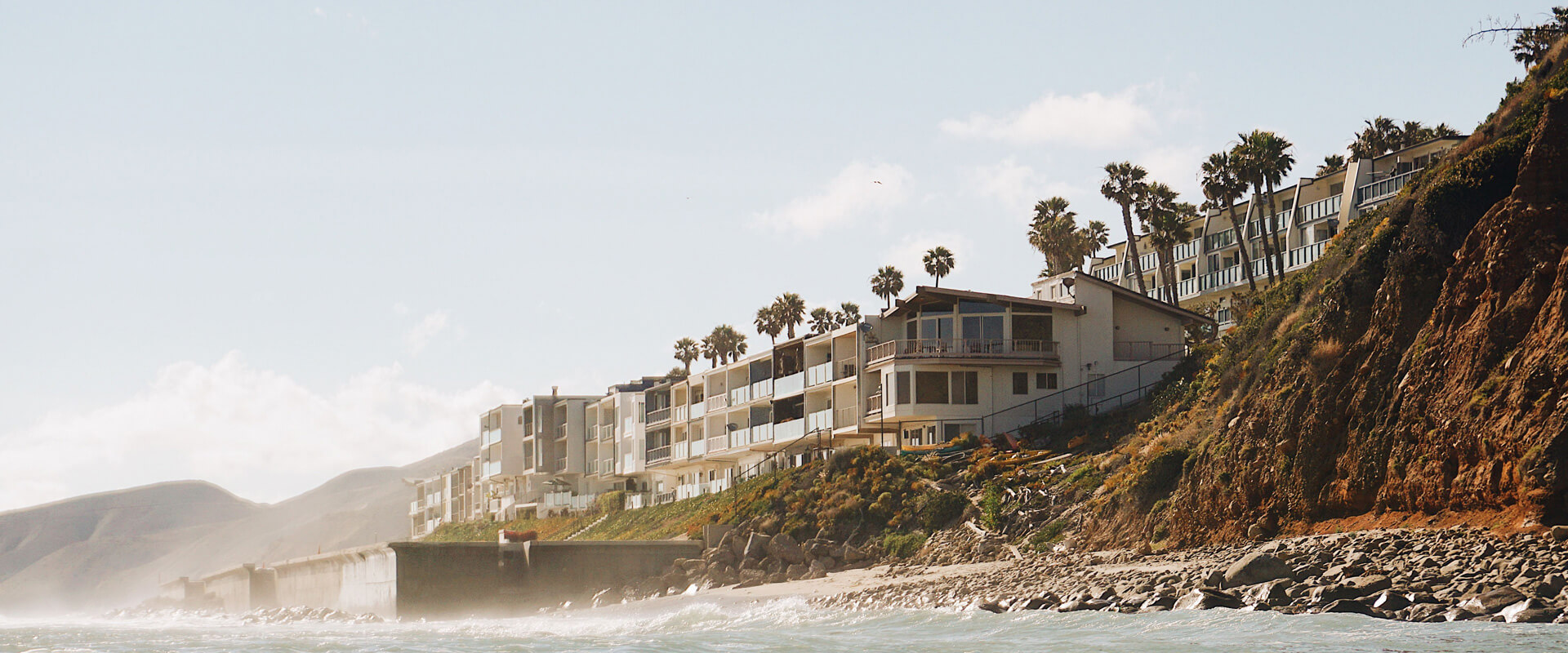
Start searching for your dream home now.
When it comes to convenience, our site is unparalleled. Whether you're in the comfort of your home, or on the go.
Our site works flawlessly on multiple devices so you can find the information you need.



